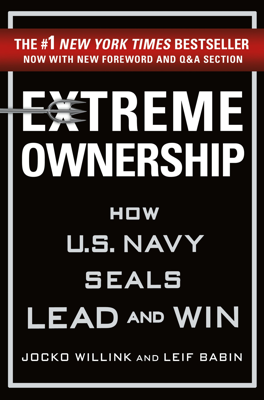Leading Up and Down the Chain of Command
Leading Down the Chain of Command
Leif Babin reflects on the intense challenges and losses faced by Task Unit Bruiser during their deployment in Ramadi, Iraq. He highlights the significant impact his unit had on the battlefield but also recognizes that he could have done a better job explaining the strategic purpose behind missions to his team. By engaging more directly and providing deeper insights into the strategic value of their operations, Babin notes that he could have enhanced his team's understanding, commitment, and morale.
Principle of Leading Down the Chain: - Leaders must ensure their team understands how their tasks fit into the larger goals. - Regular, clear communication of the strategic mission is essential to foster acknowledgment and motivation among team members. - Leaders should provide subordinates with a deeper understanding of the importance of their roles, thus improving clarity and engagement.
Leading Up the Chain of Command
Babin describes an instance of frustration arising from actions at the headquarters level of the SEAL team. He was upset due to what he perceived as unnecessary scrutiny and excessive questioning from higher ups regarding the operations planned by Task Unit Bruiser. Jocko Willink (the unit commander) helps him realize the necessity of feeding accurate and thorough information up the chain to help senior leaders understand their operational environment and reasoning better.
Principle of Leading Up the Chain: - Active engagement with higher ranks is necessary to ensure they have a comprehensive understanding of the ground situation. - Leaders need to take initiative in communicating effectively and proactively with their superiors to obtain necessary support and approvals. - Proving detailed feedback and insight helps in aligning strategic objectives and simplifies decision-making processes at higher levels.
Application to Business
Babin relates the experiences with leading up and down the chain in military contexts to business environments. In a consulting scenario with a business leader frustrated by corporate headquarters' oversight, Babin advises using proactive communication to bridge understanding gaps. This included providing context for decisions made on the ground and offering opportunities for senior executives to engage directly with field operations.
Key Actions for Business Leaders: - Take the initiative to communicate transparently and regularly with higher management to provide clarity on ground-level challenges and decisions. - Invite senior executives to field activities to witness challenges firsthand, enhancing mutual understanding and support. - Ensure consistent, detailed reporting that illustrates the thought process behind key decisions and actions, to foster trust and expedite approvals.
By applying these principles of leading up and down the chain of command, leaders can greatly improve overall efficiency, morale, and success, both in military and corporate settings.
